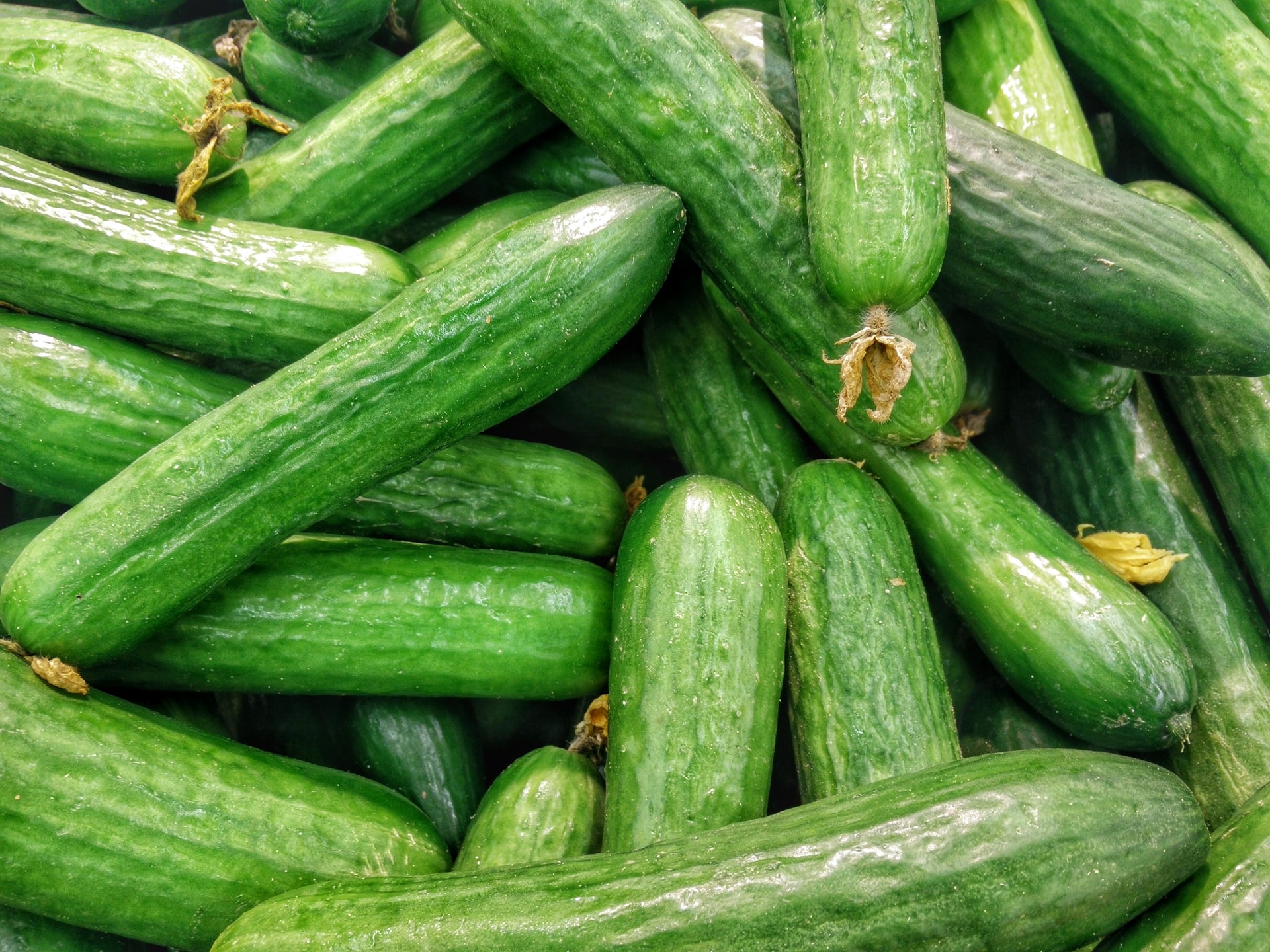Cucumbers can germinate in 2 to 3 days under favorable temperature conditions (25 – 35°C) and with sufficient moisture. If the temperature is at the minimum (12°C), germination can extend to 15 – 20 days.
A temperature of 15°C is necessary to maintain the vegetative growth of the plant, with the fastest growth occurring at 25 – 27°C. Growth stops at 40°C, and the plant quickly dies at 0°C. Low positive temperatures (3-10°C) are unfavorable for cucumber crops, and if they persist for 2 to 3 days, signs of damage appear (the leaves lose turgor and turn yellow, first the older leaves and then the younger ones).
Flowering begins at around 15°C, and the optimal temperature for pollination is around 20°C.
Cucumber fruits grow very quickly under favorable conditions. The growth of the fruits is also influenced by the number of fruits on the plant; if there are more fruits, they grow slower, but if one or more fruits are harvested, the growth of the remaining fruits will accelerate. Fruiting can last up to 90 days under favorable conditions in the open field, and this period is extended in protected environments.
For optimal cucumber growth, plenty of moisture is needed in the soil (70 – 100% of field capacity) and air (70 – 90% relative humidity).
Cucumbers prefer light, permeable, and well-aerated soils with a higher humus content. The soils preferred for their successful growth and development are neutral, with an optimal pH of 7 (it can go as low as pH 6.6). If soil analysis (using a pH meter that provides information on the soil’s reaction) shows that the pH is lower, liming should be done before planting. For liming, CaCO3 or CaO can be used. The average amount of hydrated (construction) lime ranges from approximately 4.5 t/ha (for less acidic soils) to 9.0 t/ha (for highly acidic soils).
The groundwater level should not be higher than 70 cm; it would be preferable for it to be even lower, 90 – 100 cm, and it should not fluctuate. Cucumber is a warm-climate plant, sensitive to low temperatures, so areas with a longer frost-free period are more suitable.
Choosing a Location for Cultivation and Crop Rotation
Cucumbers prefer light, permeable, and well-aerated soils with a higher humus content. The soils preferred for their successful growth and development are neutral, with an optimal pH of 7 (it can go as low as pH 6.6). If soil analysis (using a pH meter that provides information on the soil’s reaction) shows that the pH is lower, liming should be done before planting. For liming, CaCO3 or CaO can be used. The average amount of hydrated (construction) lime ranges from approximately 4.5 t/ha (for less acidic soils) to 9.0 t/ha (for highly acidic soils).
The groundwater level should not be higher than 70 cm; it would be preferable for it to be even lower, 90 – 100 cm, and it should not fluctuate. Cucumber is a warm-climate plant, sensitive to low temperatures, so areas with a longer frost-free period are more suitable. Cucumbers do not favor windy locations, so it is advisable to avoid them or plant two to three rows of corn between cucumber rows.
Cucumbers can be grown on the same land only after 3 to 4 years, and the previous crop should not be from the Cucurbitaceae family, nor should it be potatoes, tomatoes (due to the same viruses), brassicas, or corn (due to potential herbicide residue damage). Suitable previous crops include cereals, legumes, onions, lettuce, spinach, kohlrabi, and other vegetables.













































